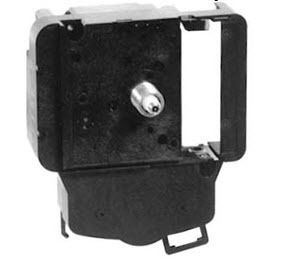Miniquartzpendulum
Climate Clock Movements that Go down Jaws
 Clock motions are the core cpus within watches that calculate moment by moment where all the hands ought to be directing. Clockmakers start with clock movements (likewise called clock electric motors) when they are working out their initial style, as everything else basically hinges upon them. Over the centuries these little mechanical computers have turned into innovative devices capable of some genuinely jaw-dropping things.
Clock motions are the core cpus within watches that calculate moment by moment where all the hands ought to be directing. Clockmakers start with clock movements (likewise called clock electric motors) when they are working out their initial style, as everything else basically hinges upon them. Over the centuries these little mechanical computers have turned into innovative devices capable of some genuinely jaw-dropping things.
Most clock activities report temporal info at differing degrees of detail as well as according to cycles of numerous lengths. The cycle might be 12 hours, 24 Hr, a week, or a month. The level of information could be the minute, the second, or even something finer.
Yet the same mechanism can be adapted as well as modified rather to report climate details. Sometimes, (e.g., tide degree) a cycle is involved, whereas in other instances there is merely a straight partnership between the output of a sensor (temperature, humidity) as well as the position on a dial.
Whatever type of information is reported; it had better be rather accurate. If the timing or calibration is not relatively close to the provided specification, individuals will certainly soon learn that the details is unstable as well as stop trusting it. Naturally, unless the clock system remains in sync with an atomic benchmark of some kind, some collected mistake is unavoidable, yet there is a virtually universal assumption that a readjustment of more than a couple of seconds monthly approximately must not be essential.
Over the millennia man has actually become rather familiar with the rhythms inherent in the day-to-day daybreak, the stages of the moon, his organic features, as well as the weathers. Maintaining precise track of all these things is also essential to him and has actually been for almost as lengthy. The motion should maintain regardless of just what is being tracked, whether pertaining to time or tide. clock part
The old approaches used by clocks for reliably tracking time progressed throughout years. A coiled spring or hanging weight exerted rotational force or an equipment or flywheel. An escapement system attached to a swinging pendulum withstood outright self-contained as well as regulated the rotational rate.
Pendulums have an organic frequency to their swings based mainly on the characteristics of length and weight. Changes to these features enable one to fine-tune the pendulum regularity. With delicate precision, after that, one could adjust the entire mechanism such that it made a single tick for each second.
In even more current times, escapements and pendulums have actually been abandoned, and the quartz crystal has taken over as the timing power generator for movements. Crystals emit fast vibrations at a steadfast regularity that is much higher than a 1-second speed. A set of digital registers and accumulators partitions this original frequency till the tick/second pulse is obtained.
In both the standard and modern-day methods, after that, a very specific one-second pulse is derived. From here it is fairly straightforward to accumulate ticks so that a minute is incremented every One Minute therefore that a hr is incremented every 60 minutes. Electronically this is finished with signs up; mechanically it is accomplished with equipment proportions.
But these are only the essentials. There is essentially no limit to the elegance one can improve this structure. And some results genuinely drop jaws.
As an example, you do not need to adhere to the usual 12-hour style, with a dozen characters or symbols spread around the perimeter of the dial. You could cycle once daily rather than twice, leading to a 24-hour layout.
You don't have to quit there either. You can extend the cycle right into a weekly or regular monthly one, where a fourth hand factors at the day of the week or the day of the month, specifically.
In terms of weather coverage, the tide degree is intermittent, in fact a combination of both the lunar and also solar cycles. So the 4th hand of a clock motion can direct at the tide, provided it is adjusted appropriately for the stage of the moon as well as for neighborhood problems. This result is quite striking.
Other weather sensations worth reporting are not cyclical. Examples are the temperature level, the humidity, and the barometric pressure. In these cases, weather activities convert the worth result by sensors right into numbers or placements along calibrated dials.
When the device is analog, several dials have to be superimposed such that they do not interfere with one another, and the hands have to be installed on concentric shafts. In the electronic instance, the various values are merely presented numerically in different regions. Both layouts can being much admired and also mind-blowing.
One can additionally make use of accessories to drop jaws. For example, lots of motors are geared up to set off the ringing of chimes on the hr and/or quarter hr. This attribute is generally an add-on to whatever set of attributes currently offered by the electric motor.
One more motion accessory is an accessory that oscillates in synchrony with the seconds. One could hook on a pendulum and also convey the illusion of something antique like a grandfather clock. The pendulum can be decorated however one wishes to make a stylistic statement.
Whether you require something to inform time or to report the climate, you will certainly find readily available several clock movements that drop jaws.
See more details here:
gravatar rebelmouse about.me disqus crunchbase storify quora academia google docs dailymotion medium medium alexa slideshare feedburner livejournal wordpress


